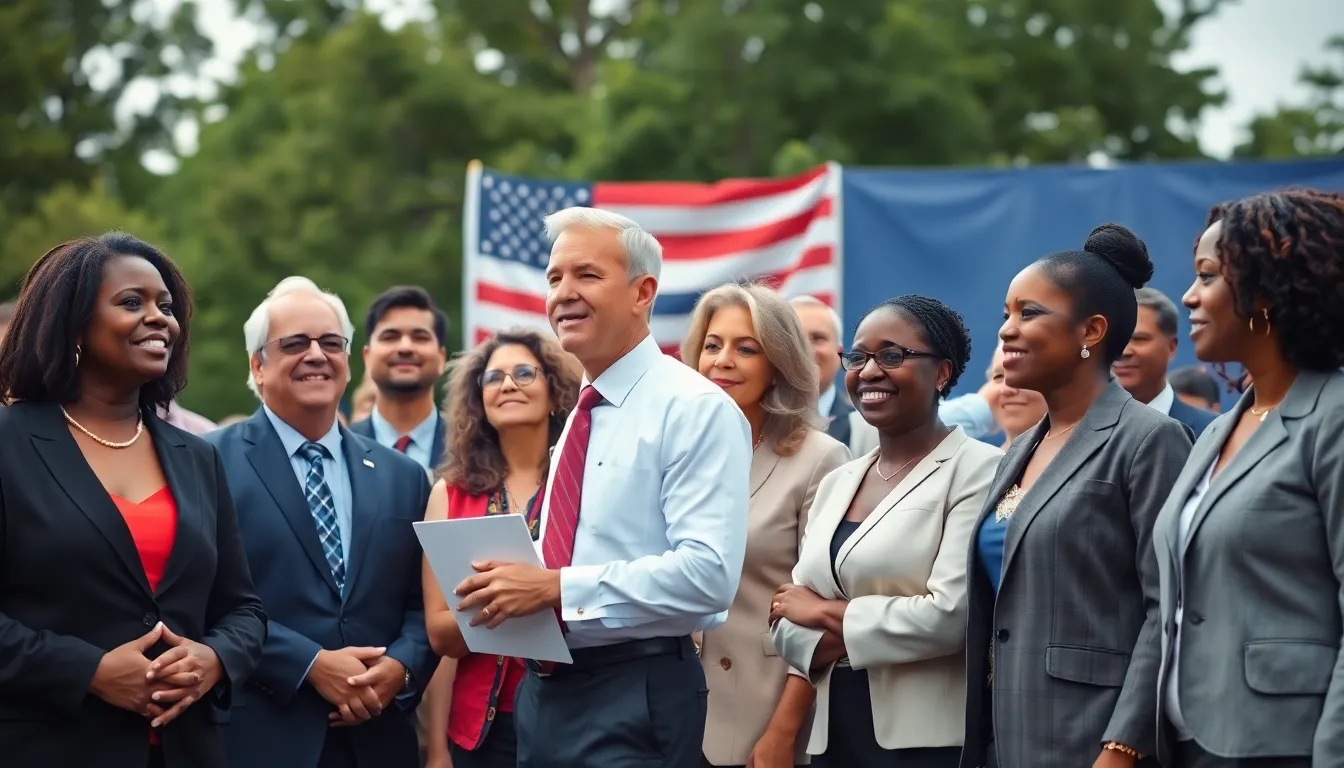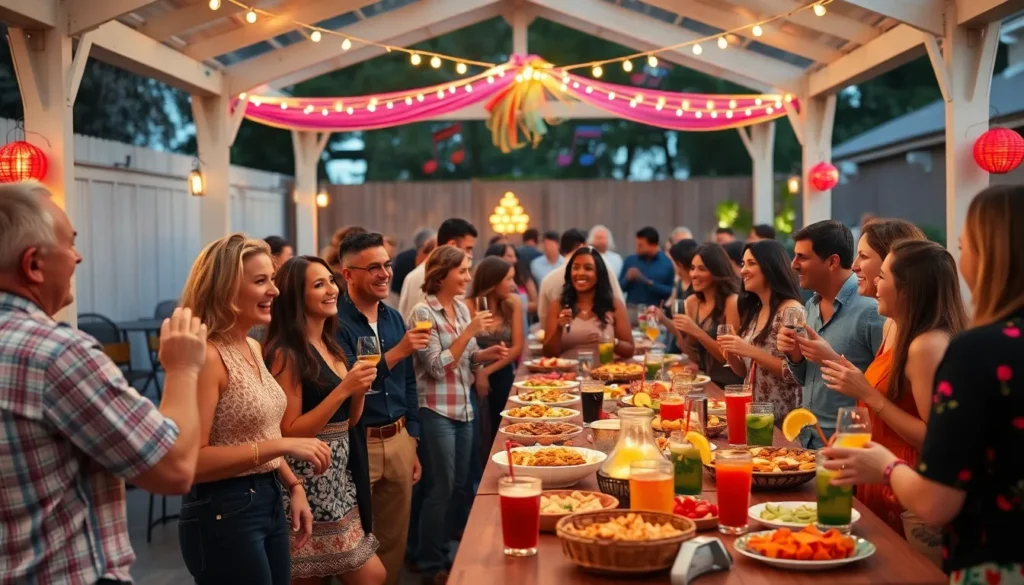When it comes to throwing a party, it’s not just about the food and drinks—it’s about creating an unforgettable experience. Enter the concept of party synergy, where the magic happens when every element works together seamlessly. Imagine a gathering where the music sets the mood, the snacks are perfectly paired, and the guests vibe like they were born to mingle. Sounds dreamy, right?
Table of Contents
ToggleUnderstanding Party Synergy
Party synergy involves creating a cohesive and immersive experience at events. Elements like music, food, and guest interactions contribute significantly to the overall atmosphere.
Definition of Party Synergy
Party synergy refers to the collaborative interaction of various components that enhance a gathering’s experience. When food, drinks, music, and social interactions complement one another, attendees feel engaged and connected. This harmonious blend fosters a vibrant atmosphere. Effective planning and execution promote this synergy, leading to memorable experiences for guests.
Importance of Party Synergy in Politics
Political events thrive on strong party synergy. Engaging all components, such as speeches, debates, and networking opportunities, creates a sense of unity. Such unity strengthens party identity and fosters collaboration among members. Effective communication during these events enhances relationships and promotes shared goals. Better cohesiveness translates into more enthusiastic support from constituents, ultimately driving successful political outcomes.
Factors Influencing Party Synergy

Party synergy involves various factors, each contributing to the success of events and political activities. Leadership and cohesion, as well as strategic electoral collaborations, play significant roles in shaping these experiences.
Leadership and Party Cohesion
Effective leadership fosters unity among party members. Strong leaders instill a sense of purpose, guiding collective efforts towards shared goals. They encourage open communication, which enhances trust and collaboration. A cohesive team aligns its vision and values, ensuring every member feels a sense of belonging. Engaged leaders who actively participate in events elevate the overall experience, making attendees feel valued and connected.
Electoral Strategies and Collaborations
Electoral strategies significantly impact party synergy. Collaborations among candidates and party stakeholders create a unified front during campaigns. When parties harness collective strengths, they maximize outreach and influence. Coordinated efforts, such as joint events and shared messaging, enhance visibility and resonance with constituents. Additionally, leveraging partnerships with local organizations can increase community engagement and support, ultimately driving electoral success.
Case Studies of Successful Party Synergy
Party synergy plays a crucial role in creating impactful events. Multiple examples illustrate how cohesive strategies enhance experiences.
Example 1: Historical Context
The Democratic National Convention in 1960 exemplifies party synergy. At this event, John F. Kennedy and Lyndon B. Johnson effectively combined their strengths. Kennedy’s charisma met Johnson’s legislative experience, creating a powerful alliance that energized their base. The synergy was evident in their collaborative speeches and strategic networking efforts, fostering unity among supporters. This historical example highlights how well-coordinated messaging and shared goals lead to a cohesive event atmosphere, ultimately contributing to their electoral success.
Example 2: Recent Developments
Recent political events showcase the importance of party synergy in modern campaigns. During the 2020 election, the Biden campaign focused on collective messaging among candidates. Events featured coordinated themes that highlighted unity against common challenges. This collaboration increased visibility and engaged a broader audience. Incorporation of digital platforms further amplified their reach, facilitating connections among constituents. Successful joint rallies and sharing resources demonstrated how strategic partnerships can enhance party identity and drive voter engagement.
Challenges to Achieving Party Synergy
Achieving party synergy encounters several challenges that can hinder unity and effectiveness. Internal conflicts and external pressures often compromise the collaborative spirit essential for a successful event.
Internal Conflicts and Divisions
Internal conflicts among party members frequently disrupt harmony. Disagreements over policies, leadership roles, and strategic decisions create divisions. These divisions can lead to a lack of communication, resulting in missed opportunities for collaboration. When individuals prioritize personal agendas over collective goals, the overall vision suffers. Additionally, unresolved disputes can negatively impact member morale, leading to disengagement. To strengthen unity, addressing these conflicts promptly and fostering open dialogue is crucial.
External Pressures and Public Perception
External pressures significantly influence party synergy. Public perception is shaped by media coverage, social media commentary, and community feedback. Negative narratives can undermine the party’s efforts, creating an uphill battle for cohesion. When the public views a party as disorganized or fragmented, trust diminishes. Consistent messaging and proactive engagement with constituents help mitigate these challenges. Adapting to external influences while maintaining core values is essential for preserving synergy.
Conclusion
Achieving party synergy is vital for creating memorable events and fostering unity among members. By ensuring that every element of a gathering works seamlessly together, hosts can elevate the overall experience for attendees. This cohesive approach not only strengthens relationships but also enhances engagement and support.
In political contexts, effective party synergy cultivates a strong identity and drives electoral success. Addressing challenges is essential to maintain this unity, allowing parties to adapt and thrive in dynamic environments. Ultimately, the power of collaboration and strategic alignment cannot be underestimated in both social and political gatherings.






